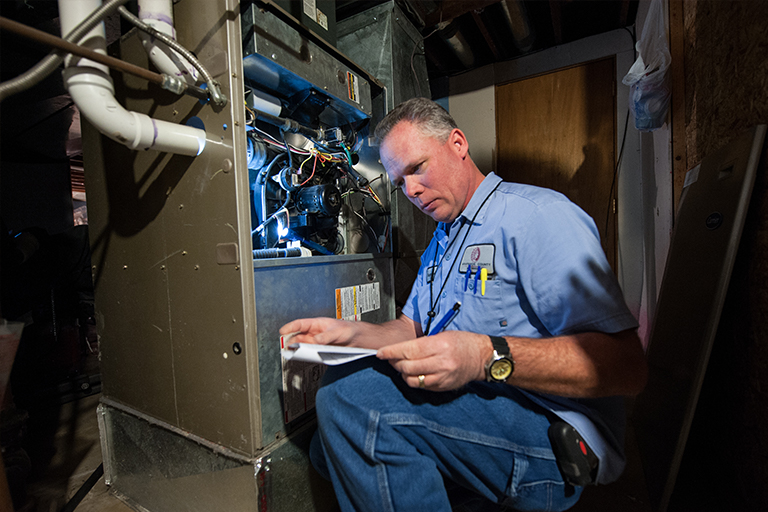By Pat Keegan and Brad Thiessen
When we talk about comfort in our homes, we usually think about where the thermostat is set. But there’s more to the picture than just the indoor temperature.
During the winter, covering cold surfaces like hardwood floors can improve comfort. An area rug can be visually appealing while helping retain indoor heat.
An important piece of the comfort puzzle is radiant heat, which transfers heat from a warm surface to a colder one. A person sitting in a room that’s 70 degrees can still feel chilly if there’s a cold surface nearby, such as a single-pane window, a hardwood floor or an exterior wall. Covering these cold surfaces can help. Try using area rugs, wall quilts or tapestries, bookcases and heavy curtains to help prevent heat loss and make your home feel more comfortable. Keep in mind, radiant heat can really work in your favor. A dark-colored tile floor that receives several hours of direct sun can retain heat during the day and radiate it into the room during the evening.
Another possible cause of discomfort during the winter is air movement. We recognize this when weather forecasts report chill factor, which is a calculation of air temperature and wind speed.
Moving air makes us feel colder, which is why we use fans in the summer. During the winter, cold, outdoor air can infiltrate our homes.
On average, a typical home loses about half its air every hour, and that amount can increase when outdoor temperatures are extremely cold and the wind is blowing. In this case, the best way to keep your home toasty is to minimize air leaks. You can easily locate air leaks in your home with a blower door test, which is typically conducted by an energy auditor. These are some of the most common spots where air leaks occur:
• Penetrations and cracks around windows and doors
• Exterior cracks in brickwork and siding
• Plumbing and wiring penetrations from the exterior to the interior of the home
• Mail slots or pet doors
A variety of products like caulk, weather stripping, outlet cover gaskets and dryer vent covers can be used to seal these leaks.
While a fireplace may warm a small area of your home, it can also suck heated air from the room out through the chimney. Always close the fireplace flue when a fire is not burning.
A fireplace can also be a major source of air leakage. If you don’t use the fireplace, you can seal the opening or install an inflatable chimney balloon. Before using the fireplace, consider this: unless you have a high-efficiency insert, your fireplace will suck heated air from the room out through the chimney. Always close the fireplace flue when it’s not in use.
Your pursuit of comfort should also include a careful look at your home’s heating system. Is it distributing heat evenly and efficiently? Forced-air systems distribute air through supply ducts and registers. Small rooms may only have one register, but large rooms could have several. You may find some supply registers are blowing copious amounts of warm air and others little if at all.
Ideally, every room should have return air registers. If you see possible shortcomings with your forced-air system, enlist the help of a certified contractor that really knows how to improve ductwork.
Ensure your furnace is running at peak efficiency by scheduling an annual inspection. Check your filter monthly and replace or clean it as necessary. If you heat your home with radiators, bleed them at the beginning of the season so they flow more efficiently.
Beyond that, you can always warm yourself by wearing heavier clothing, doing some light exercise throughout the day, and snuggling with a pet or blanket.
This column was co-written by Pat Keegan and Brad Thiessen of Collaborative Efficiency.

